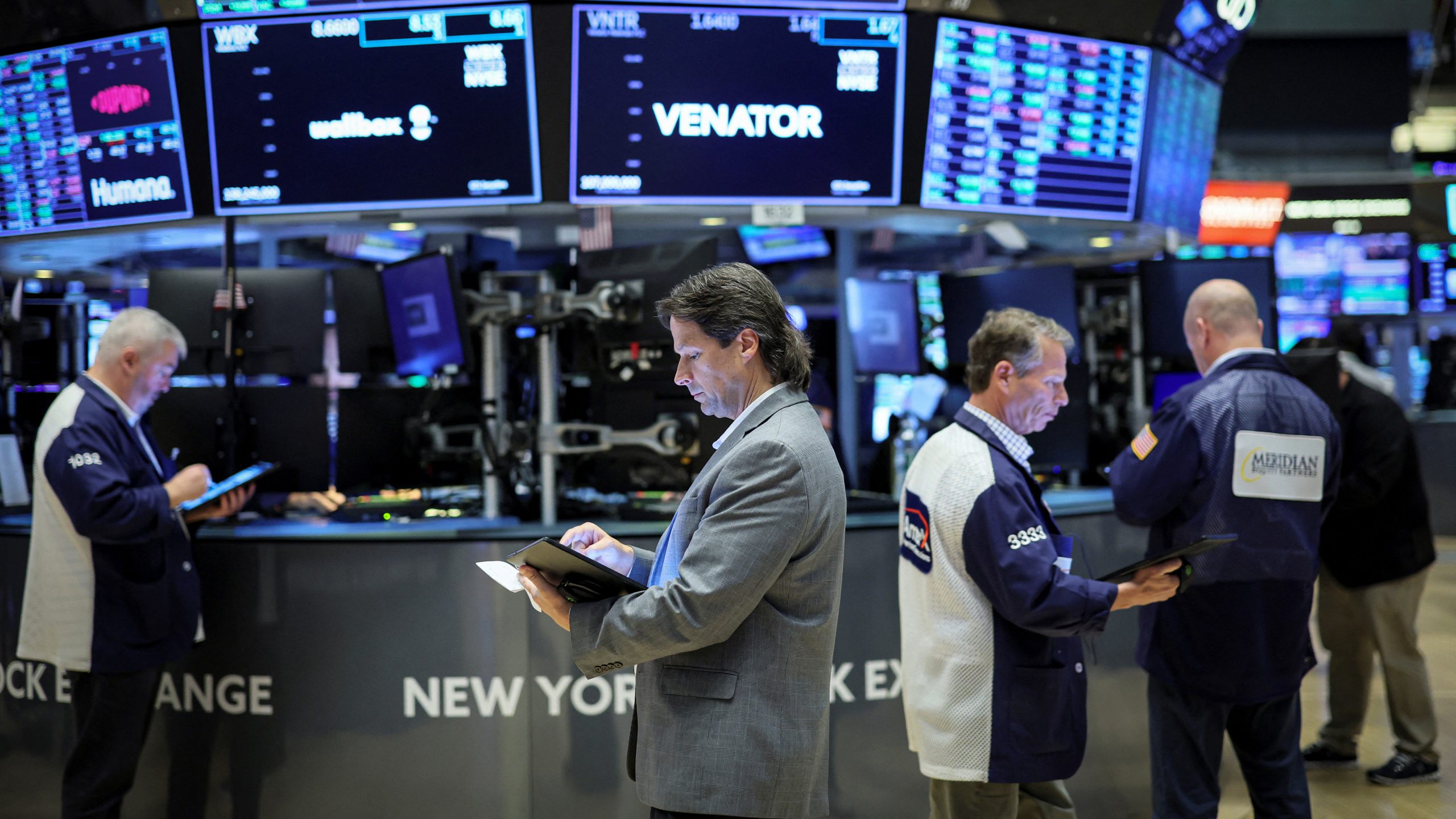
[elfsight_social_share_buttons id=”1″]
U.S. stocks were mixed, oil prices were choppy, and the dollar and Treasury yields rose on Monday as Wall Street digested a raft of macroeconomic news.
The moves came after sterling slumped to a record low earlier in the day, before recovering, and a renewed selloff in British gilts pushed euro zone bond yields higher as the reaction to last week’s fiscal statement in Britain again roiled markets.
U.S. stocks were mixed to start the week – The Dow Jones Industrial Average dipped about 0.5% and the S&P 500 fell about 0.3%, while the Nasdaq Composite gained 0.4%.
Global equities were also mixed after initially sliding on concerns about high interest rates continued to put pressure on the financial system. Reaction to Italy’s election result, where a right-wing alliance won a clear majority, was muted.
Europe’s STOXX 600 index at first slipped to hit a new low since December 2020 but then swung back for slight 0.1% gain on the day. Asian stocks fell 1.45%.
“I think everyone felt they were swimming in a tsunami of newsflow last week after one of the most incredible macro weeks in recent memory,” Deutsche Bank strategist Jim Reid wrote in a client note on Monday.
The pound skidded to an all-time low against the dollar, last trading down about 0.4%, as investors waited to see if the Bank of England will intervene to calm concerns over government plans that could stretch the country’s finances.
Sterling’s declines are partly due to dollar strength – the dollar index, which tracks the greenback against six peers – hit a new 20-year top of 114.58 in early trade. It was last at $113.5, up about 0.36%.
The tumble is leading to speculation the Bank of England will have to hold an emergency meeting to raise rates.
“The Bank of England is in a very difficult spot where if they don’t react, they risk another sterling collapse and things getting very messy,” said Mike Riddell, senior portfolio manager, Allianz Global Investors. “If they do react, a developed market hiking rates to defend the currency looks like an emerging market. So they’re damned if they do, damned if they don’t.”
Financial Issues host Shana Burt said, “The economy is definitely showing signs of weakening,” adding, “We are already in a recession even though the Biden administration is refusing to admit that. ”
Sterling at all-time low against dollar

Stress building
European government bonds were also hit. Five-year UK government bond yields jumped 50 basis points to their highest since October 2008, sending euro zone bond yields higher. Germany’s 10-year government bond yield hit its highest since December 2011 at 2.132%, and Italy’s benchmark bond yields rose to their highest since 2013.
In the United States, Treasury yields also rose to new highs on Monday amid concerns that central banks globally will keep tightening monetary policy to curb stubbornly high inflation.
Two-year Treasury yields, which tend to be more sensitive to interest rate changes, rose to a fresh 15-year high of 4.237%, and benchmark 10-year note yields were up about 5 basis points from their Friday close, climbing to 3.746%.
Oil prices hit nine-month lows on Monday before recovering to stand higher on the day in choppy trade, as recession fears and a strong dollar spooked the market where participants were waiting for details on new sanctions on Russia.
Brent crude futures for November settlement were up about 0.9%, at $86.95 a barrel, having earlier fallen as far as $84.51, the lowest since Jan. 14.
Gold prices edged up from a 2-1/2-year low on Monday as the dollar pulled back slightly from its two-decade peak, offering some support to bullion in the face of jitters over rising U.S. interest rates.
Spot gold was flat at $1,643 per ounce, after dropping to its lowest price since April 2020 at $1,626.41.
“There has been an economic logic at play, as central banks raised rates to drive monetary policy into restrictive territory, get below trend growth for a while – a polite way of saying a recession – and then you get lower inflation,” said Samy Chaar, chief economist at Lombard Odier.
“The question is whether the financial world can go through that sequence. It feels like we are reaching the limit of that, things are starting to break, for example what we see with sterling.”
Additions for FISM News (additions and edits for FISM News by Michael Cardinal)
